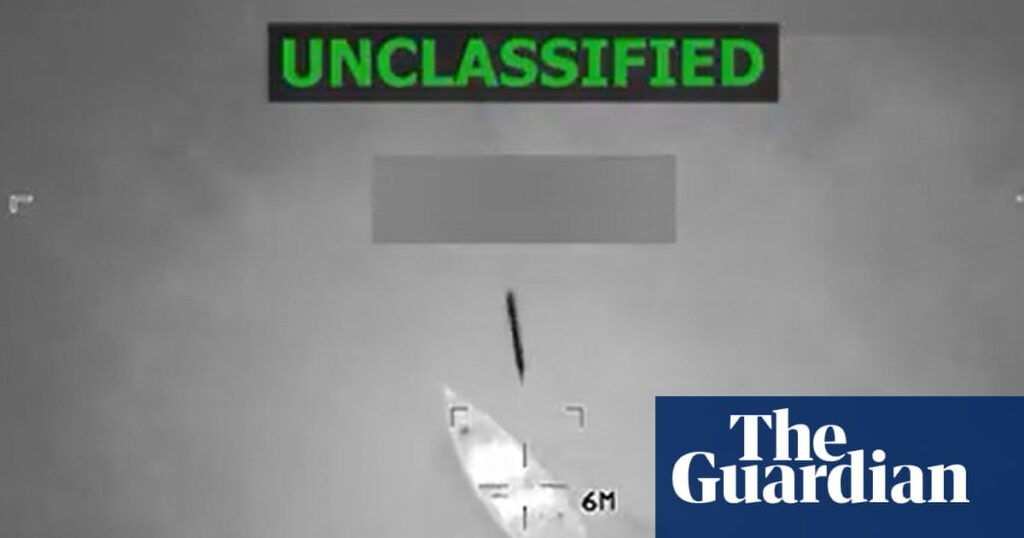The United States has carried out another military strike against a boat it claims was carrying illegal drugs in the Caribbean, killing six people onboard, the Pentagon chief, Pete Hegseth, said on Friday morning.
Later on Friday, the Pentagon said that an aircraft carrier was being moved to waters off South America, as part of the administration’s stated campaign to combat drug trafficking.
In a social media post on Friday morning, Hegseth said that the US military had conducted its 10th strike on a suspected drug-trafficking vessel.
Hegseth alleged that the boat was “known by our intelligence to be involved in illicit narcotics smuggling, was transiting along a known narco-trafficking route, and carrying narcotics”.
He said that the strike, conducted in international waters, killed all six people who were onboard, and was “the first strike at night”.
No US forces were harmed, he added.
As has become common with announcements of such attacks, Hegseth shared a short video showing a boat at sea suddenly exploding as it was struck with military ordnance.
Pentagon spokesperson Sean Parnell announced that Hegseth had also directed the USS Gerald R Ford aircraft carrier and its strike group to be sent to the US Southern Command to “bolster US capacity to detect, monitor, and disrupt illicit actors and activities that compromise the safety and prosperity of the United States homeland and our security in the Western Hemisphere”.
“These forces will enhance and augment existing capabilities to disrupt narcotics trafficking and degrade and dismantle TCOs,” he said, referring to transnational criminal organizations.
According to the Associated Press, the Ford is currently deployed to the Mediterranean Sea along with three destroyers. The AP reports that it will likely take several days for the ships to get to South America.
Since early September, the Trump administration has announced 10 strikes against vessels that it alleges are trafficking narcotics. These attacks have taken place both in the Caribbean and, as of this week, off the Pacific coast of South America. According to the Associated Press, at least 43 people have been killed in the strikes since September.
The Trump administration has not disclosed many details about the targets other than the number of people killed and the allegations that the boats carried narcotics.
The strikes have drawn widespread condemnation, including from civil liberties groups and several South American countries, and some lawmakers and human rights groups have questioned the legality of the attacks.
after newsletter promotion
On Tuesday, the Guardian reported that the Central Intelligence Agency (CIA) was providing much of the intelligence used to carry out airstrikes. Experts have said that the agency’s central role means much of the evidence used to select the targets will almost certainly remain secret.
On Friday morning, when announcing the latest strike, Hegseth claimed, without providing any evidence, that the target of the attack was “a vessel operated by Tren de Aragua (TdA), a Designated Terrorist Organization (DTO), trafficking narcotics in the Caribbean Sea”.
The administration has referred to Tren de Aragua and other gangs as terrorist organizations. Legal experts have suggested that simply characterizing gangs and drug cartels as terrorist organizations does not give the administration any additional authority to use lethal force.
White House officials have also sought to justify the strikes internally and externally by claiming Trump was exercising his powers under article 2 of the US constitution, which allows the president to use military force in self-defense in limited engagements.
Earlier this week, the Colombian president, Gustavo Petro, condemned the US strikes, describing them as as “murder”.
“The US government’s strategy breaks the norms of international law,” Petro said.

